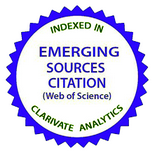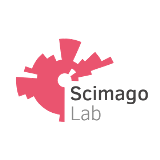Evaluation of a Dextran-Poly(N-Isopropylacrylamide) Copolymer as a Potential Temperature-Dependent Nanocarrier for Photosensitizers with Different Properties
DOI:
https://doi.org/10.15407/ujpe65.7.638Keywords:
poly-N-isopropylacrylamide, conformational transition, photosensitizerAbstract
Thermosensitive polymer poly-N-isopropylacrylamide (PNIPAM) having a conformational transition in the interval of physiological temperatures was discussed last years as a novel drug delivery system. Chlorin e6 (Ce6) is a photosensitizer used in the photodynamic anticancer therapy. The comparative study of the encapsulation of Ce6 and its derivative, dimethylether of chlorine e6 (DME Ce6), into a water-soluble star-like PNIPAM-based copolymer to prevent the aggregation of a photosensitizer in the water medium is carried out. The photophysical properties of the copolymer/photosensitizer complexes as functions of the temperature in the region of the conformational transition of the polymer matrix have been studied and discussed. It is shown that Ce6 at low temperatures interacts weakly with the polymer phase. As a result, the absorption and fluorescence properties of Ce6 in aqueous and polymer solutions are practically identical. Fluorescence characteristics of Ce6 in a copolymer solution remain unchanged, when it is heated, which indicates the lack of a possibility for this sensitizer to bind in the bulk of the polymer phase. Following fluorescence data, all DME Ce6 molecules are bound with the polymer matrix, when a temperature is higher than the Lower Critical Solution Temperature (LCST) of the polymer. The formed complexes are quite stable. In the presence of serum proteins, the molecules of the photosensitizer remain associated for a long time with the polymer. At temperatures below LCST, DME Ce6 is not bound by the polymer. Moreover, the cooling of a solution of DME Ce6/polymer complexes leads to the rapid dissociation of photosensitizer molecules with subsequent aggregation or binding to biological structures in an aqueous medium. The obtained results show that the possibility of using the polymer PNIPAM as a temperature-dependent nanocarrier strongly depends on the properties of the loaded drug.
References
S. Chen, H. Zhonh, B. Gu et al. Thermosensitive phase behavior and drug release of in situ N-isopropylacrylamide copolymer. Mater Sci. Eng. C., Mater. Biol. Appl. 32, 2199 (2012). https://doi.org/10.1016/j.msec.2012.05.052
J. Meid, F. Dierkes, J. Cui et al. Mechanical properties of temperature sensitive microgel/polyacrylamide composite hydrogels-from soft to hard fillers. Soft Matter 8, 4254 (2012). https://doi.org/10.1039/c2sm06868k
H.L. Bernice., A. Bismarck, M.B. Chan-Park. High internal phase emulsion templating with self-emulsifying and termoresponsive hitosan-graft-PNIPAM-graft-oligoproline. Biomacromolecules 5, 1777 (2014). https://doi.org/10.1021/bm500172u
Li-li Zhang, He Jia-song, Jun Zhang, Zhi-Hua Gan. Synthesis and characterization of temperature-sensitive cellulosegraft-poly (N-isopropylacrylamide)copolymers. Chinese J. Polymer Sci. 33, 1640 (2015). https://doi.org/10.1007/s10118-015-1703-2
I. Bischofberger, V. Trappe. New aspects in the phase behavior of poly-N-isopropyl acrylamide: systematic temperature dependent shrinking of PNIPAM assemblies well beyong the LCST. Sci. Rep. 5, 15520 (2015). https://doi.org/10.1038/srep15520
Rashmi R. Kokardekar, Vaibhav K. Shah, Hardik R. Mody. PNIPAM poly(N-isopropylacrylamide): A thermaresponsive "Smart" polymer in novel drug delivery systems. Int. J. Medical Update 7 (2), 60 (2012).
L.H.В. Lima, Y. Morales, T.В. Cabral. Poly-N-isopropylacrylamide (PNIPAM): A reversible bioadhesive for sclerotomy closure. Int. J. Retina and Vitreous 2, 23 (2016). https://doi.org/10.1186/s40942-016-0048-5
Kenji Kubota, Kenzi Hamano, Nobuhiro Kuwahara et al. Characterization of poly(N-isopropylmethacrylamide) in water. Polymer J. 22, 1051 (1990). https://doi.org/10.1295/polymj.22.1051
V. Chumachenko, N. Kutsevol, Yu. Harahuts et al. Starlike Dextran-graft-PNiPAM copolymers. Effect of internal molecular structure on the phase transition. J. Molecular Liquids 235, 77 (2017). https://doi.org/10.1016/j.molliq.2017.02.098
N. Kutsevol, A. Naumenko, V. Chumachenko et al. Aggregation processes in hybrid nanosystem polymer/nanosilver/cisplatin. Ukr. J. Phys. 63 (6), 513 (2018). https://doi.org/10.15407/ujpe63.6.513
G. Telegeev, N. Kutsevol, V. Chumachenko et al. Dextran-polyacrylamide as matrices for creation of anticancer nanocomposite. Int. J. Polymer Sci., Article ID 4929857 (2017). https://doi.org/10.1155/2017/4929857
H. Liang, Z. Zhou, R. Luo et al. Tumor-specific activated photodynamic therapy with an oxidation-regulated strategy for enhancing anti-tumor efficacy. Theranostics 8 (18), 5059 (2018). https://doi.org/10.7150/thno.28344
V.P. Zorin, I.I. Khludeev, T.E. Zorina. Study of tumoritropic capacity of chlorine-e6 and its derivatives on af mice with transplanted hepatoma-a. Eksperiment. Onkologiya 14 (3), 39 (1992).
Z.J. Zhou, J.B. Song, L.M. Nie, X.Y. Chen. Reactive oxygen species generating systems meeting challenges of photodynamic cancer therapy. Chem. Soc. Rev. 45 (23), 6597 (2016). https://doi.org/10.1039/C6CS00271D
V.P. Zorin, I.I. Khludeyev, I.S. Mikhalovsky et al. Kinetic characteristics of porphyrin distribution in the blood. Laser Use in Oncology II, Proc. SPIE 4059 (1999). https://doi.org/10.1117/12.375257
V.P. Zorin. Kinetics of the redistribution of porphyrins between the proteins of blood and membranes. J. Appl. Spectrosc. 66, 602 (1999). https://doi.org/10.1007/BF02675394
P. Kumari, S. Jain, B. Ghosh, V. Zorin, S. Biswas. Polylactide-based block copolymeric micelles loaded with chlorin e6 for photodynamic therapy: In vitro evaluation in mono-layer and 3D spheroid models. Molecular Pharmaceutics 14 (11), 3789 (2017). https://doi.org/10.1021/acs.molpharmaceut.7b00548
N.В. Kutsevol, A.В. Naumenko, Yu.В. Harahuts et al. New hybrid composites for photodynamic therapy: synthesis, characterization and biological study. Appl. Nanosci. 9, 881 (2019). https://doi.org/10.1007/s13204-018-0768-y
V.P. Zorin, I. Michalovsky, T.E. Zorina, I.I. Khludeyev. Distribution of chlorin-e6 derivatives in biological systems: investigation of pH-effect, photochemotherapy: Photodynamic therapy and other modalities. Proc. SPIE 2625 (1996). https://doi.org/10.1117/12.230981
A. Scotti, W. Liu, J.S. Hyatt et al. The CONTIN algorithm and its application to determine the size distribution of microgel suspensions, J. Chem. Phys. 142, 234905 (2015). https://doi.org/10.1063/1.4921686
O.A. Yeshchenko, A.P. Naumenko, N.V. Kutsevol et al. Anomalous inverse hysteresis of phase transition in thermosensitive dextran-graft-PNIPAM copolymer/Au nanoparticles hybrid nanosystem. J. Phys. Chem. C 122 (14), 8003 (2018). https://doi.org/10.1021/acs.jpcc.8b01111
A. Halperin, M. Kr¸cger, F. ˚ Aoise, M. Winnik. Poly(N-isopropylacrylamide) phase diagrams: Fifty years of research. Angew. Chem. Int. Ed. 54, 5342 (2015). https://doi.org/10.1002/anie.201506663
H. Gattuso, A. Monariab, M. Marazzi. Photophysics of chlorin e6: from one- and twophoton absorption to fluorescence and phosphorescence. RSC Adv. 7, 10992 (2017).
https://doi.org/10.1039/C6RA28616J
R. Bachor, C.R. Shea, S.J. Belmonte, T. Hasan. Free and conjugated chlorin e6 in the photodynamic therapy of human bladder carcinoma cells. J. Urol. 146 (6), 1654-8 (1991). https://doi.org/10.1016/S0022-5347(17)38206-X
Downloads
Published
How to Cite
Issue
Section
License
Copyright Agreement
License to Publish the Paper
Kyiv, Ukraine
The corresponding author and the co-authors (hereon referred to as the Author(s)) of the paper being submitted to the Ukrainian Journal of Physics (hereon referred to as the Paper) from one side and the Bogolyubov Institute for Theoretical Physics, National Academy of Sciences of Ukraine, represented by its Director (hereon referred to as the Publisher) from the other side have come to the following Agreement:
1. Subject of the Agreement.
The Author(s) grant(s) the Publisher the free non-exclusive right to use the Paper (of scientific, technical, or any other content) according to the terms and conditions defined by this Agreement.
2. The ways of using the Paper.
2.1. The Author(s) grant(s) the Publisher the right to use the Paper as follows.
2.1.1. To publish the Paper in the Ukrainian Journal of Physics (hereon referred to as the Journal) in original language and translated into English (the copy of the Paper approved by the Author(s) and the Publisher and accepted for publication is a constitutive part of this License Agreement).
2.1.2. To edit, adapt, and correct the Paper by approval of the Author(s).
2.1.3. To translate the Paper in the case when the Paper is written in a language different from that adopted in the Journal.
2.2. If the Author(s) has(ve) an intent to use the Paper in any other way, e.g., to publish the translated version of the Paper (except for the case defined by Section 2.1.3 of this Agreement), to post the full Paper or any its part on the web, to publish the Paper in any other editions, to include the Paper or any its part in other collections, anthologies, encyclopaedias, etc., the Author(s) should get a written permission from the Publisher.
3. License territory.
The Author(s) grant(s) the Publisher the right to use the Paper as regulated by sections 2.1.1–2.1.3 of this Agreement on the territory of Ukraine and to distribute the Paper as indispensable part of the Journal on the territory of Ukraine and other countries by means of subscription, sales, and free transfer to a third party.
4. Duration.
4.1. This Agreement is valid starting from the date of signature and acts for the entire period of the existence of the Journal.
5. Loyalty.
5.1. The Author(s) warrant(s) the Publisher that:
– he/she is the true author (co-author) of the Paper;
– copyright on the Paper was not transferred to any other party;
– the Paper has never been published before and will not be published in any other media before it is published by the Publisher (see also section 2.2);
– the Author(s) do(es) not violate any intellectual property right of other parties. If the Paper includes some materials of other parties, except for citations whose length is regulated by the scientific, informational, or critical character of the Paper, the use of such materials is in compliance with the regulations of the international law and the law of Ukraine.
6. Requisites and signatures of the Parties.
Publisher: Bogolyubov Institute for Theoretical Physics, National Academy of Sciences of Ukraine.
Address: Ukraine, Kyiv, Metrolohichna Str. 14-b.
Author: Electronic signature on behalf and with endorsement of all co-authors.













